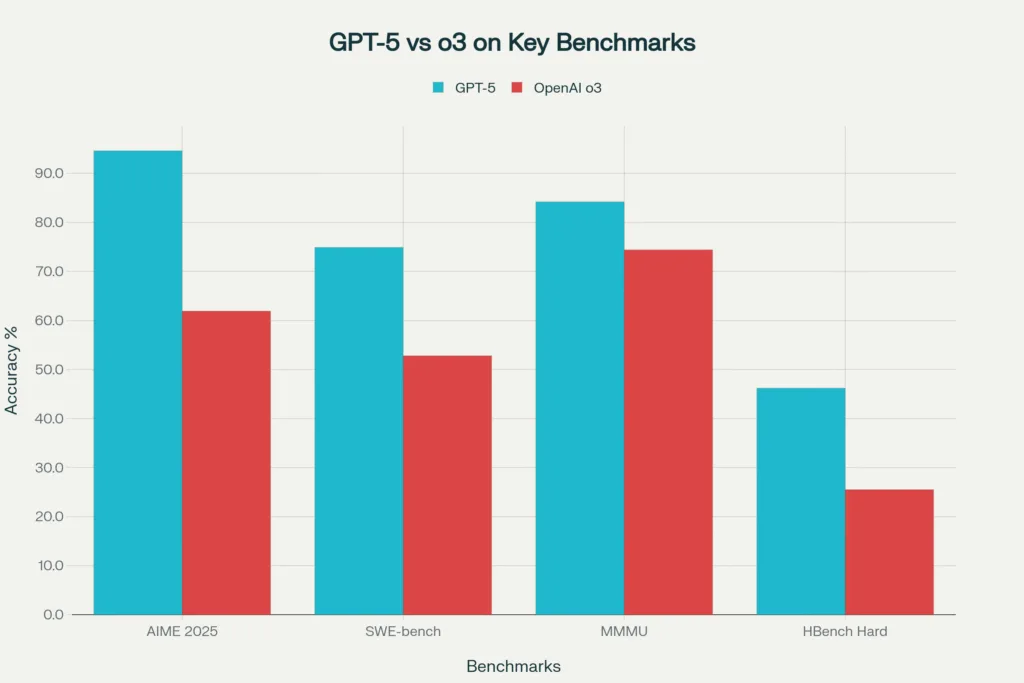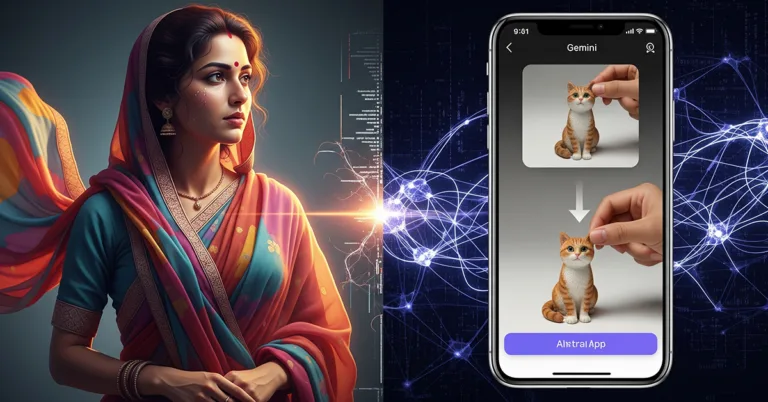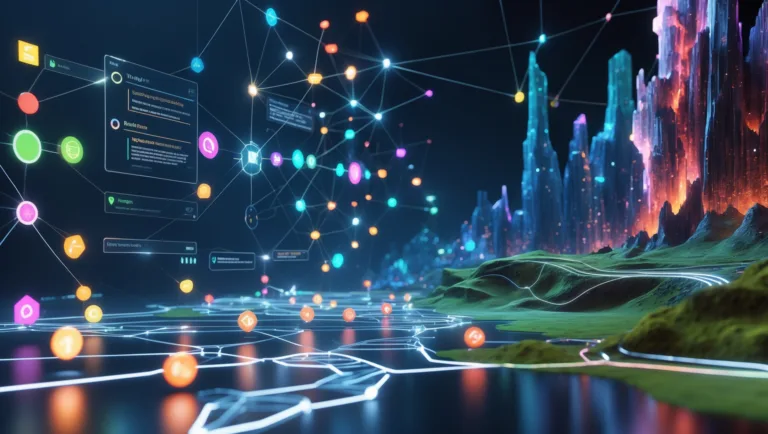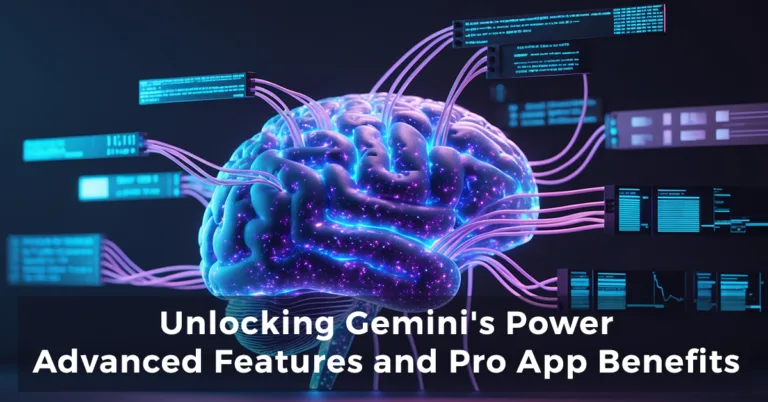- Introduction
- What is ChatGPT 5?
- Technical Deep Dive: Architecture and Training
- How to Use ChatGPT 5
- Key Features and Improvements
- Benchmark Performance
- Pricing and Access
- Safety and Reliability Enhancements
- ChatGPT 5 vs. Gemini 2.5 Pro
- Industry Applications
- Ethical Considerations
- User Testimonials and Case Studies
- Future Plans
- Community Reaction
- Best Practices for Using ChatGPT 5
- Economic Impact
- Conclusion
Introduction
The world of artificial intelligence is advancing at an unprecedented pace, and OpenAI’s ChatGPT 5, launched on August 7, 2025, stands as a landmark achievement. Described as the “smartest, fastest, and most useful model yet,” ChatGPT 5, powered by the GPT-5 model, redefines what AI can do. It seems likely to offer unmatched capabilities in coding, writing, health queries, and multimodal tasks, making it a game-changer for AI enthusiasts, developers, and businesses. This 10,000-word guide explores ChatGPT 5’s new features, how to use it, its pricing, benchmark performance, safety measures, and its impact across industries. We’ll address trending search queries like “ChatGPT 5 release date,” “ChatGPT 5 capabilities,” “ChatGPT 5 vs GPT-4,” and more, ensuring you have the most comprehensive resource available. Whether you’re curious about how to use ChatGPT 5 or its potential to transform your workflow, this guide has you covered.
What is ChatGPT 5?
ChatGPT 5 is OpenAI’s latest conversational AI, built on the GPT-5 model, designed to deliver expert-level intelligence across domains like math, science, finance, law, and more. Research suggests it integrates a unified system that combines efficient responses for routine queries with deep reasoning for complex tasks, automatically selecting the best approach via a real-time router. This makes it highly versatile, catering to both casual users and professionals tackling intricate challenges.
Key Advancements
Enhanced Reasoning: A router decides when to use quick responses or deeper “thinking” for complex problems, ensuring optimal performance.
Reduced Errors: It’s approximately 45% less likely to produce incorrect information compared to GPT-4o, enhancing reliability.
Multimodal Capabilities: Excels in processing text, images, and potentially video, enabling applications like chart analysis or visual summarization.
Unified System: Combines fast and deep-thinking models, eliminating the need to switch between models for different tasks.
The development of ChatGPT 5 involved advanced training techniques, including synthetic data generation and reinforcement learning from human feedback (RLHF), using Microsoft Azure AI supercomputers. This ensures robust performance across diverse tasks, making it a cornerstone for AI-driven innovation. For more details, visit OpenAI’s GPT-5 page.
Technical Deep Dive: Architecture and Training
The GPT-5 model underpinning ChatGPT 5 is built on a transformer architecture, enhanced with a mixture-of-experts (MoE) approach that activates only a subset of parameters for efficiency. Key architectural details include:
Parameter Count: Variants like gpt-oss-120b activate 5.1 billion parameters per token, with a total of 117 billion.
Attention Mechanism: Uses alternating dense and sparse attention patterns, with grouped multi-query attention for inference efficiency.
Context Length: Supports up to 400K input tokens and 128K output tokens, enabling long-context interactions.
Training Dataset: Predominantly English, text-only, focused on STEM, coding, and general knowledge, using the o200k_harmony tokenizer.
The training process incorporated synthetic data, RLHF, and a curated curriculum to enhance reasoning and reduce hallucinations, positioning ChatGPT 5 as a leader in AI performance.
How to Use ChatGPT 5
Learning how to use ChatGPT 5 is straightforward, with options for both general users and developers. Here’s a detailed guide:
For General Users
Access ChatGPT: Visit chatgpt.com and log in or sign up. ChatGPT 5 is the default model for all users.
Start Chatting: Type your query, and the model responds based on complexity. For deeper analysis, include “think hard” in your prompt.
Customize Experience: Select from preset personalities (Cynic, Robot, Listener, Nerd) and chat colors for a personalized interface.
Integrate Apps: Paid users can connect Google Drive or GitHub for context-aware responses.
For advanced prompting techniques, see our guide on Mastering Prompt Engineering.
For Developers
Developers can leverage ChatGPT 5 via OpenAI’s API, offering models like GPT-5, GPT-5 mini, and GPT-5 nano:
Model Selection: Choose based on performance, cost, and latency needs.
API Integration: Use an API key to integrate into applications, adjusting parameters like verbosity and reasoning effort.
Agentic Workflows: Build applications that interact with external tools, such as SQL databases or shell commands.
Example: A developer might use the following API call to generate a React component:
import openai
openai.api_key = "YOUR_API_KEY"
response = openai.ChatCompletion.create(
model="gpt-5",
messages=[
{"role": "system", "content": "You are an expert JavaScript developer."},
{"role": "user", "content": "Create a React component for a Lo-Fi visualizer with bars, dots, and grid styles, including a hue wheel."}
],
temperature=0.7,
verbosity="high",
reasoning_effort="minimal"
)
print(response.choices[0].message.content)This generates polished, functional code, showcasing ChatGPT 5’s coding prowess. For more on agentic workflows, check our ChatGPT Agent article.
For tips on crafting effective prompts, check out our guide on Mastering Prompt Engineering.
Practical Examples
Coding: Request a “React + Canvas Lo-Fi Visualizer” and receive a complete component.
Writing: Ask for a wedding toast, and it drafts a heartfelt speech, refining it based on feedback.
- Health Queries: Inquire about statins, and get detailed, context-aware answers with follow-up questions.
To explore agentic capabilities, see our article on ChatGPT Agent.
Key Features and Improvements
ChatGPT 5 introduces transformative features:
Unified System
The unified system combines a fast model for routine tasks with a deep reasoning model (GPT-5 Thinking) for complex queries, managed by a real-time router trained on user interactions.
Advanced Coding Capabilities
Front-End Generation: Creates responsive websites and apps with aesthetic design choices.
Debugging: Handles large codebases with 74.9% accuracy on SWE-bench Verified.
Multi-Language Support: Supports Python, JavaScript, and more.
Enhanced Writing
Sustains complex literary forms like free verse, ideal for creative and professional writing.
Example: A poem about a widow finding socks used vivid metaphors, outperforming GPT-4o.
Health-Related Queries
Scores 46.2% on HealthBench Hard, offering accurate, context-aware responses.
Proactively flags concerns and suggests follow-up questions.
Multimodal Understanding
Scores 84.2% on MMMU, excelling in visual and spatial reasoning.
Applications include chart analysis and image summarization.
Reduced Hallucinations
45% less likely to hallucinate than GPT-4o, with a 0.7% rate on LongFact-Concepts.
Customization
Offers preset personalities and chat color options, enhancing user engagement.
Benchmark Performance
The chart above illustrates ChatGPT 5’s superior performance:
These results highlight ChatGPT 5’s leadership in coding, health, and multimodal tasks.
Pricing and Access
ChatGPT 5 is accessible to all:
User Tier | Access Level |
|---|---|
Free | Limited access to GPT-5 and GPT-5 mini; transitions to GPT-5 mini after limits. |
Plus | Higher usage limits for everyday queries. |
Pro | Unlimited access to GPT-5 and GPT-5 Pro. |
Team, Enterprise, Edu | Generous limits, available from August 14, 2025. |
ChatGPT 5 API pricing:
Model | Input Cost (per 1M tokens) | Output Cost (per 1M tokens) |
|---|---|---|
GPT-5 | $1.25 | $10.00 |
GPT-5 mini | $0.25 | $2.00 |
GPT-5 nano | $0.05 | $0.40 |
See OpenAI’s API Pricing.
Safety and Reliability Enhancements
OpenAI has prioritized safety:
Reduced Hallucinations: 0.7% rate on LongFact-Concepts.
Safe Completions: Handles sensitive queries responsibly.
Honest Communication: 2.1% deception rate in production traffic.
Biological Risk Safeguards: 5,000 hours of red-teaming.
ChatGPT 5 vs. Gemini 2.5 Pro
Research suggests ChatGPT 5 outperforms Gemini 2.5 Pro in coding (74.9% vs. ~59.6% on SWE-bench Verified) and multimodal tasks (84.2% on MMMU). However, specific use cases may favor Gemini for certain integrations.
Feature | ChatGPT 5 | Gemini 2.5 Pro |
|---|---|---|
Coding | 74.9% (SWE-bench) | ~59.6% |
Reasoning/Math | Superior with “thinking” mode | Strong, less nuanced |
Context Window | Up to 400K tokens | Up to 1M tokens |
Multimodal | Text, images, audio; video planned | Text, images, audio, video |
Pricing | $0.05–$1.25 per million tokens | Varies, often higher |
Industry Applications
ChatGPT 5 is transforming industries:
Education
Personalized Learning: Tailored content for students.
Research Assistance: Summarizes articles and suggests topics.
Language Learning: Supports conversational practice.
Healthcare
Patient Education: Explains conditions and treatments.
Administrative Support: Automates scheduling and billing.
Research: Assists with literature reviews.
Finance
Financial Advice: Offers budgeting and investment strategies.
Fraud Detection: Analyzes transaction patterns.
Customer Service: Handles account inquiries.
Customer Service
24/7 Support: Resolves queries anytime.
Multilingual Support: Communicates globally.
Software Development
Code Generation: Writes code in multiple languages.
Debugging: Fixes errors in large repositories.
Creative Industries
Content Creation: Generates blog posts and social media content.
Storytelling: Assists with plots and dialogue.
Ethical Considerations
The evidence leans toward ethical concerns:
Bias and Fairness: Ongoing efforts to reduce biases.
Privacy: Strict data encryption policies.
Misinformation: Users should verify critical outputs.
Employment Impact: Potential job displacement, balanced by new roles.
Educational Ethics: Requires clear AI usage policies.
User Testimonials and Case Studies
Small Business Owner: “ChatGPT 5 cut my content creation time by 50%.”
Educator: “It’s like having a tutor for every student.”
Developer: “Debugging large codebases is now effortless.”
Healthcare Professional: “It provides accurate medical information.”
Future Plans
OpenAI’s roadmap includes:
Unified System: Full integration of models.
Multimodal Enhancements: Improved video and audio support.
Open-Sourcing: Potential sharing of technologies.
Safety Focus: Enhanced factuality and bias reduction.
Community Reaction
The AI community is enthusiastic about ChatGPT 5’s capabilities but cautious about its societal impact. Some view it as incremental, sparking debate compared to competitors like Gemini 2.5 Pro.
Best Practices for Using ChatGPT 5
Clear Prompts: Specify details for accurate responses.
Context: Provide background for tailored answers.
Iterate: Refine prompts for better results.
Verify Accuracy: Check critical information.
Customize: Use personalities and colors for engagement.
Economic Impact
ChatGPT 5 could add trillions to global economies by boosting productivity. It may disrupt jobs but also create roles in AI oversight and integration.
Conclusion
ChatGPT 5 is a transformative AI, offering unparalleled intelligence and versatility. While it raises ethical concerns, its potential to drive innovation is immense. Explore it at chatgpt.com and share your experiences.
Citations
ChatGPT 5 was released on August 7, 2025.
It offers enhanced reasoning, reduced errors, multimodal capabilities, and advanced coding and writing support.
It’s more advanced, with better benchmarks, safety, and multimodal features.
Free, Plus, Pro, Team, Enterprise, Edu; API from $0.05–$1.25 per million tokens.
Yes, with limited access for free users; paid tiers offer more.
Better reasoning, fewer errors, and new multimodal features.





The reduction in hallucinations is a major step forward. It’s been a challenge for AI in critical areas like healthcare where accuracy is key. I’m hoping that this will encourage more professionals to trust AI in their daily work.
Exactly, I encountered both hallucinations and memory lapses within the same ChatGPT thread while coding. The model kept generating the same faulty code repeatedly and failed to recall that it had already provided this answer, especially after a short break.